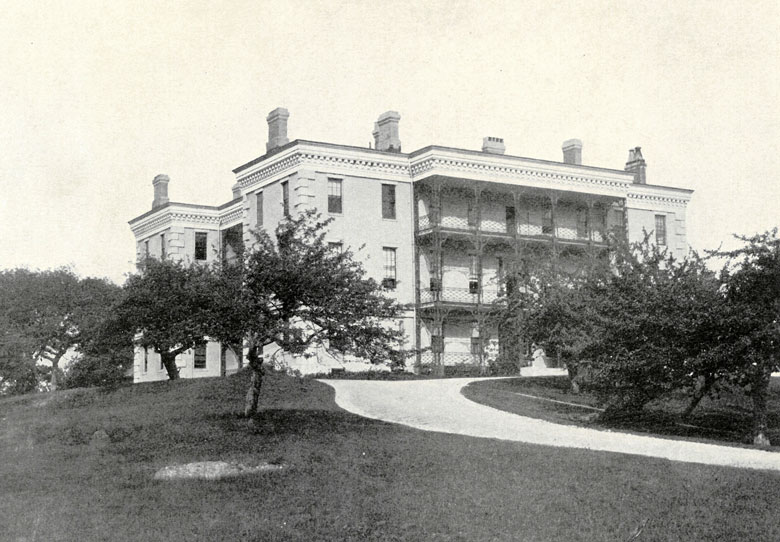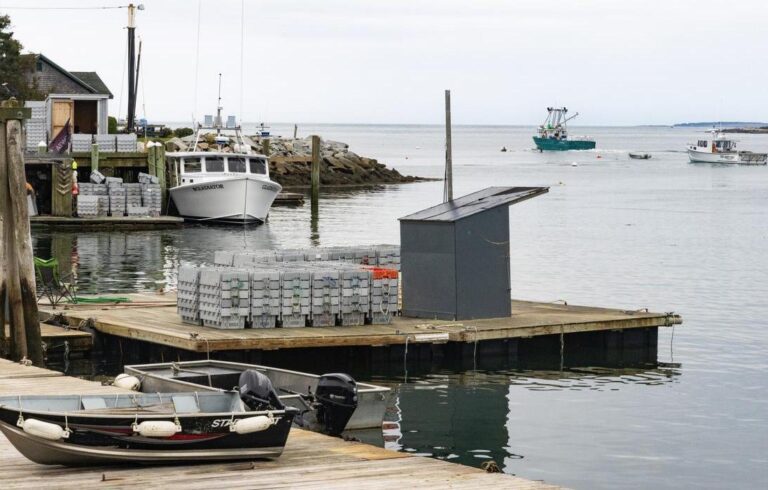Social welfare programs are subject to frequent criticism on the national and local levels and are usually associated with numerous 1930s policies enacted to respond to social hardships highlighted by the Great Depression. In actuality, the first government-managed social insurance program dates all the way back to the 18th century and specifically benefited mariners.
The newly established United States of America relied heavily on the shipping trade. With income from customs duties and fees being a primary source of the government’s income, maritime labors were directly related to national prosperity.
In response to the growing number of merchant seamen suffering from illnesses and injuries while serving at sea, Congress established the Marine Hospital Service (USMHS) in 1798 to provide medical care for sick and disabled mariners. The source of funding came from seamen’s wages, totalling 20 cents per month.
Portland was the home of the only Marine Hospital built in Maine.
In the early years, the USMHS faced challenges such as limited resources, widespread diseases, and a lack of standardized healthcare practices.
However, it gradually expanded its operations, modernized treatment, and played a critical role during major health crises, including epidemics of cholera, smallpox, and yellow fever. The Marine Hospital Service also worked alongside the Custom Service and local port authorities to support the quarantine of vessels showing signs of illness among their crew, or arriving from countries with known outbreaks.
The Service built and managed its own hospitals in addition to renting spaces in American ports to meet the needs of mariners. Portland was the home of the only Marine Hospital built in Maine. Located on Martin’s Point at the mouth of the Presumpscot River, it opened in 1859 following several years of planning and construction.
However, mariners from up and down Maine’s coast also needed care. Medical practitioners in smaller communities were able to treat seamen as needed and were paid by the case. In other states, more formal contracts existed for private management of facilities dedicated to the care of mariners.
The accompanying photograph of the Portland Marine Hospital was taken around 1900 and was featured in a pamphlet touting the sites of Portland. For most of its history, the building has remained a medical facility and is currently part of the Martin’s Point Health Care campus.
The structure has been listed on the National Register of Historic Places since 1974. Interestingly, one hundred years prior, an 1872 federal report did not see much of a future for the hospital stating it was “badly planned and defectively constructed” and required $15,000 in repairs (equivalent to $400,000 in 2025). At the time of this report, the hospital treated a few hundred patients per year.
In the 20th century, the Service’s mission evolved to encompass national health issues like the control of infectious diseases, the promotion of sanitary practices, and medical research. In 1912, the name was officially changed to the U.S. Public Health Service.
Today, the PHS continues to work under the Department of Health and Human Services, carrying forward the legacy of the USMHS, which played a foundational role in the development of the American public health system.
Kelly Page is the curator of collections at Maine Maritime Museum in Bath. The museum reopens May 17 with free admission and discounted cruise tickets available at the door. At noon, flags will be raised over the Wyoming with a cannon salute. A tour the historic Percy & Small Shipyard will also be offered.





